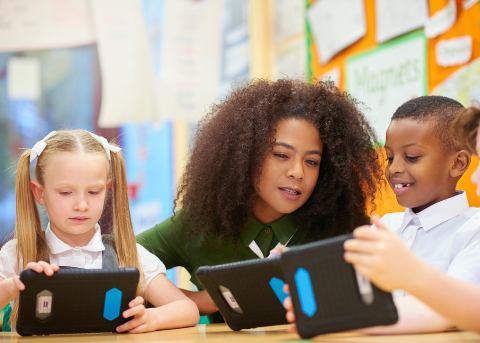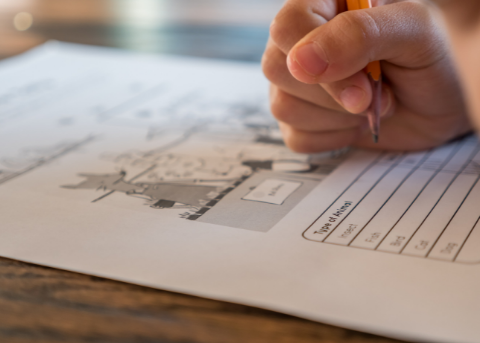
How to teach literacy in primary schools is a question that has been asked for decades. Pedagogical ideas may change, or morph, and schools will develop their own approaches to the challenge. What remains is that it will always be centre to a child’s learning.
Literacy is the lifeblood of learning. With appropriate literacy skills, a student’s world opens up. Teachers are able to effectively communicate lesson concepts, learning objectives and assessment requirements if a student has the skills to read, write and listen at the same level as the instructor.
The need to be literate is found in every classroom, across all content areas. As such, a whole-school approach should be made to the strategies employed to teach literacy. With this in place, scaffolding skill development will occur for the individual student as they progress through the years.

Recommendations for teaching literacy in primary schools
The Guidance Report Evidence for Learning (2020) Improving literacy in lower primary by Evidence for Learning explores key evidence-based recommendations for teaching all students, especially those struggling with literacy.
These recommendations are:
- Develop students’ speaking and listening skills and wider understanding of language.
- Use an engaging approach to developing reading which integrates both decoding and comprehension skills.
- Effectively implement a systematic phonics program.
- Teach students to use strategies for developing and monitoring reading comprehension.
- Teach students to use strategies for planning and monitoring writing.
- Promote fluent written transcription skills by encouraging extensive and effective practice and explicitly teaching spelling.
- Use high-quality information about students’ current capabilities to select the best next steps for teaching.
- Use high-quality structured interventions to help students who are struggling with their literacy.
There are many little ways to enlarge your child’s world. Love of books is the best of all.
– Jacqueline Kennedy
With these recommendations in mind, practical ways in which literacy can be taught to primary-aged students include:
- Dedicate tie in class for reading, including read alouds and individual work
- Provide a platform for gamified learning to better engage students
- Incorporate multisensory methods such as song, dance and visual aids
- Provide exposure to a range of texts, genres and writing styles
- Allow choice where students can choose what they read
- Include parents and guardians in the reading and comprehension process
How to use LiteracyPlanet to teach literacy in primary schools
LiteracyPlanet gives educators the tools to create personalised learning pathways that scaffold the development of literacy skills of every student, no matter their age or ability.
For primary schools, teaching literacy with LiteracyPlanet follows these basic principles.
1. Scaffolding literacy in primary schools
LiteracyPlanet’s Literacy Continuum scaffolds skill development in a sequential manner – from emergent (i.e. decoding, spelling) to proficient (i.e. critical thinking). Use this continuum to build upon each learner’s prior knowledge or take confidence in auto-assigned tasks provided in their learning sequence.
2. Targeted intervention for primary schools
With LiteracyPlanet’s curriculum guides, quickly and easily identify the skills that students need to build on at all stages of their literacy development. Our curriculum guides help teachers identify the prerequisite and requisite skills that will fill gaps in understanding, prepare students to complete classroom tasks or practice.
3. Differentiation in primary school classrooms
At all ages, there is the potential to have varied learning levels in your classroom. The program allows teachers to tailor their instruction to the specific needs of each student through:
- Easily scheduling tasks for completion in and out of the classroom;
- Tracking progress and proficiency for assigned and non-assigned work; and
- Making targeted, informed decisions using live data and easy-to-read reports.

It is important to remember that all key literary strands work together to achieve literacy outcomes. An approach that acknowledges this will be most successful.
There is evidence that the process of writing words and the process of reading words draws upon the same underlying base of word knowledge (Ehri, 1993). The more pupils know about the structure of words – including their spellings – the more efficient and fluent their reading will be (Gentry, 2000). Therefore, spelling knowledge can be viewed as a driving force behind efficient reading as well as efficient writing.
Being literate is a lifelong mission. What it means to be literate changes throughout our lifetime—consider terms such as media literacy, financial literacy and digital literacy. The core of literacy is being able to understand, communicate and partake as a member of the community in which we live, work and play. To effectively do this, we need the skills to make meaning of our world and think critically about it.
Teaching literacy in primary schools is only the beginning of our literacy learning, yet so pivotal.





